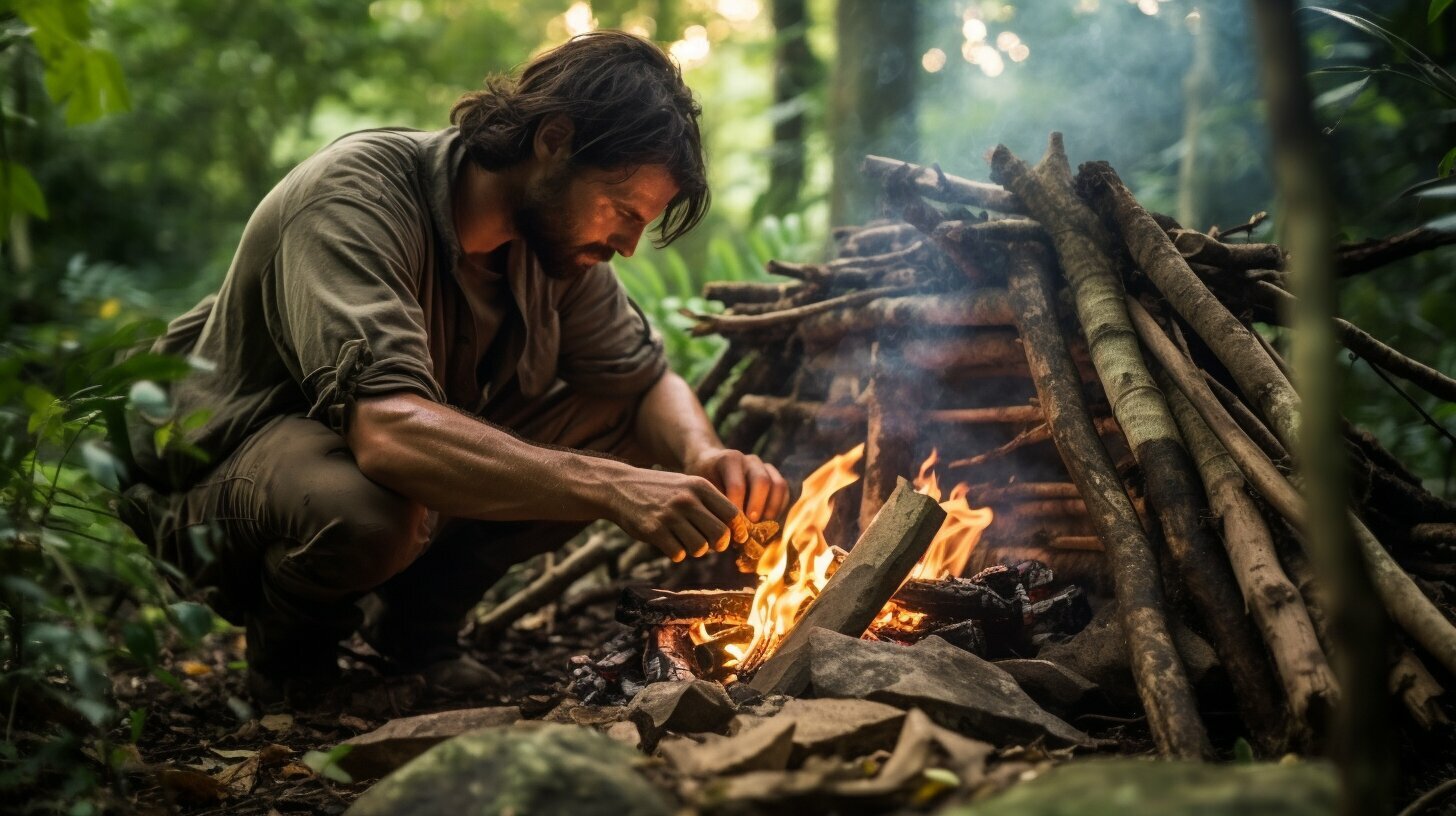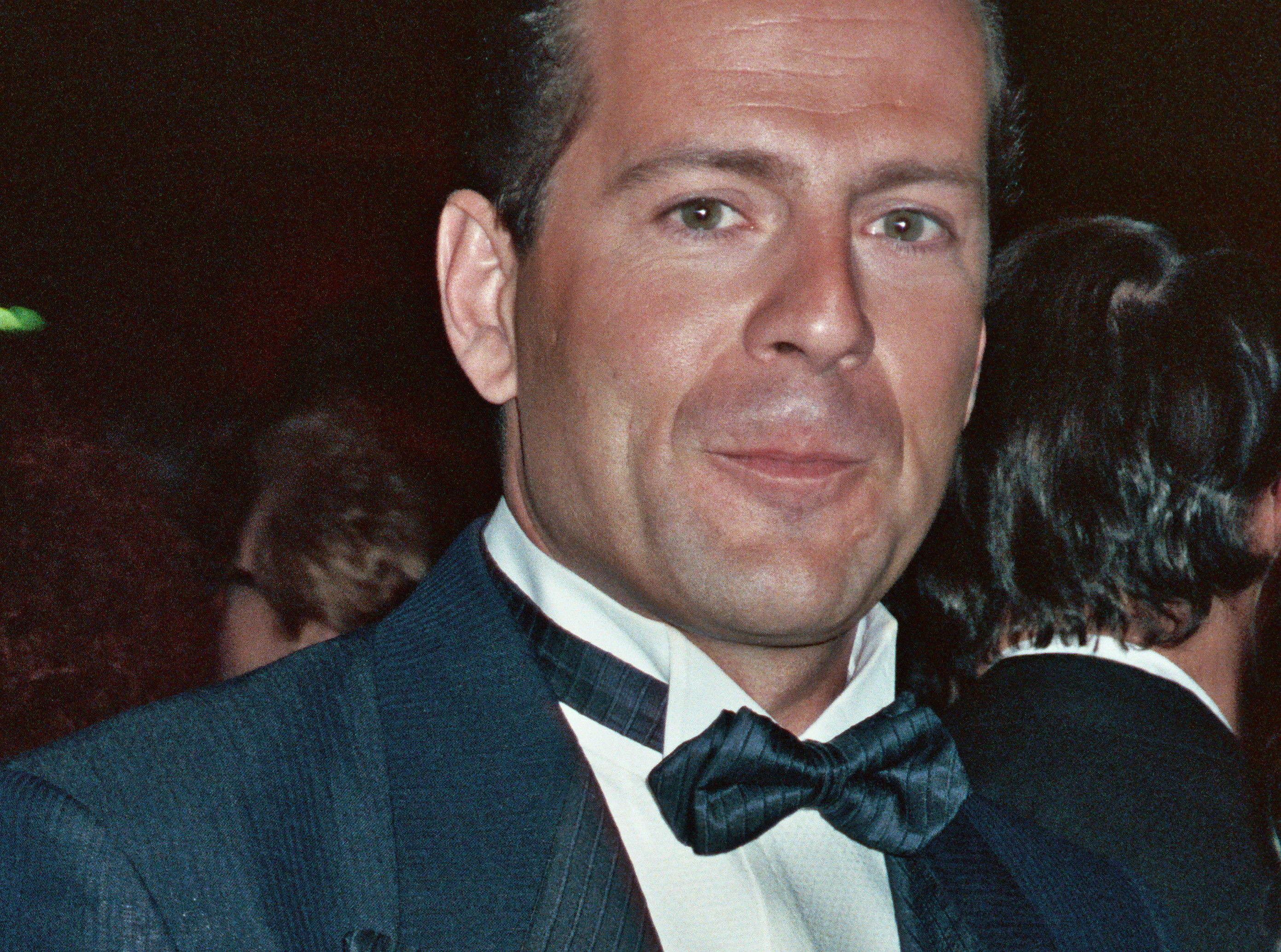
In recent years, survival shows have exploded in popularity, captivating audiences with dramatic tales of human endurance, ingenuity, and resilience in the face of extreme conditions. From *Man vs. Wild* to *Alone*, these programs showcase individuals battling the elements, foraging for food, and constructing shelters in some of the most inhospitable environments on Earth. We, as viewers, are drawn to the primal fascination with the unknown and the human capacity to overcome adversity, often inspired by hosts who appear to possess superhuman abilities to thrive where others would falter. Yet, beneath the thrilling narratives and breathtaking cinematography, a more nuanced, and often unsettling, truth about these captivating productions lies hidden.
As someone who has personally dabbled in survival television and amassed considerable experience with Hollywood producers, it becomes glaringly evident that the reality behind the scenes is far removed from the perception offered on screen. So many people watch these so-called survival shows and mistakenly believe they are absorbing realistic skills, when in fact, the fabric of reality TV is often woven with artifice. The fundamental priorities of these productions are entertainment and ratings, not authentic education or verifiable skill demonstration. This often leads to a significant distortion of what true survival entails, raising crucial questions about the practical knowledge viewers genuinely gain.
Today, we embark on an in-depth journey to dissect the realities of survival television. We will peel back the layers of dramatic editing and manufactured scenarios to reveal how these shows truly operate, exploring their inherent limitations, their shocking deceptions, and the few shining examples that genuinely stand apart. Our aim is to foster a critical perspective, enabling you to discern between genuine wilderness wisdom and mere televised spectacle, ensuring that your fascination with survival is grounded in fact rather than dangerous fiction.

1. **The Fundamental Illusion: Entertainment Over Education** The primary driving force behind the explosion of survival shows is, unequivocally, entertainment. While many programs subtly or overtly claim to impart valuable skills, their foremost objective is to attract viewers and generate revenue. This inherent dual purpose creates a constant tension between the desire to educate and the imperative to entertain, with the latter almost always prevailing, leading to conflicting messages and a skewed representation of wilderness realities.
This focus on spectacle means that authentic, time-consuming survival tasks are frequently condensed, exaggerated, or outright omitted for the sake of pacing and dramatic impact. The hours of painstaking effort required to purify water, build a robust shelter, or secure food are often reduced to a few minutes of footage, leaving viewers with a dangerously oversimplified understanding. Critical details, like the risks of waterborne illnesses or the off-camera support provided, are regularly glossed over to maintain the illusion of a solo, perilous struggle.
The allure of these shows often hinges on charismatic hosts or participants demonstrating seemingly effortless mastery over extreme conditions. While inspiring, this can cultivate a false sense of ease in viewers, fostering overconfidence in complex skills that demand extensive practice and adaptability. The underlying business model for survival TV is clear: “Drama, stunts, entertainment, and then education in that order of priority.” This prioritization dictates nearly every aspect of production, from casting to editing.
Ultimately, this fundamental illusion — that entertainment is education — is one of the most significant criticisms leveled against the genre. It’s a compelling formula for ratings, blending the guise of a documentary with thrilling stunts, creating a “perfect blend in most Hollywood yuppy producer’s minds.” However, it fundamentally misrepresents the grueling, often unglamorous, reality of true survival, leaving audiences with captivating stories but precious little actionable, real-world knowledge.

2. **Hollywood’s Vetting Process: Character Content, Not Competence** Contrary to popular belief, the selection of individuals for many survival shows has little to do with their actual wilderness expertise. Producers, driven by the need for compelling narratives and high ratings, prioritize “character content” over demonstrated survival skills. The vetting process, as described by those who have experienced it, can be “ridiculous,” focusing on broad personality traits rather than technical proficiency.
The context reveals an instance where a recognized survival expert, tasked with vetting a potential contestant, asked only about 10 broad questions over the phone. None of these questions delved into technical skills, and they were insufficient to genuinely determine the individual’s capabilities. Yet, from such a superficial evaluation, contestants might be “touted as a top tier survival expert,” simply because they fit a desired on-screen persona.
The driving force behind these choices is the pursuit of controversy and engaging interpersonal dynamics. Producers actively seek individuals who will “make good TV” and then often pair them with their “total opposite so that there is controversy.” This strategy aims to guarantee ratings, irrespective of the contestants’ actual ability to survive. The primary concern is how individuals will interact and whether they will “do something crazy from time to time.”
This focus on drama and personality means that many individuals portrayed as survival experts on television actually possess only a superficial understanding of wilderness skills, often admitting to knowing “just the broad strokes.” Their “claim to fame is TV personality and not a survival expert.” This systemic prioritization of entertainment over genuine skill in the casting process forms a core part of the “shocking truth” behind these popular programs.

3. **The “Talent” Trap: Personalities vs. True Experts** In the realm of survival television, the term “talent” often refers to charismatic personalities rather than individuals with deep, verifiable wilderness expertise. Many of the recognizable faces on these shows are, first and foremost, entertainers, adept at presenting themselves and engaging an audience, but not necessarily masters of bushcraft. This distinction is crucial for viewers to understand, as it profoundly impacts the authenticity and educational value of what is presented.
The context makes it clear that as a TV personality, an individual is essentially a subcontractor of their production company, “required to perform the tasks asked of you.” This means that the “talent controls no aspects of how the show looks or really what is done.” Their role is to execute a script or a series of stunts, not to independently demonstrate genuine survival strategies or skills unadulterated by production demands. This dynamic fundamentally shapes the content, prioritizing spectacle over pedagogical value.
Consider the candid admissions from many TV personalities themselves, who, off-camera, will “admit openly that they don’t know a ton about survival.” Their prowess lies in captivating an audience and enduring challenging physical conditions, not necessarily in the intricate knowledge required for long-term self-reliance. This disparity highlights the “talent trap,” where impressive endurance or presentation skills are conflated with comprehensive survival knowledge, leading viewers astray.
However, there are rare exceptions, individuals who are indeed “the real deal” and possess “legitimate experience” not only from their television appearances but from their “entire lives has been a journey of self reliance and testing yourself against the wild.” Laura Zerra and Eugene Runkis are cited as prime examples of instructors who are truly the “best of the best.” These individuals are the genuine survivalists, forging their skills through lived experience, a stark contrast to many whose expertise is largely manufactured for the camera.

4. **Survivorman: A Glimmer of Authentic Endeavor** Among the pantheon of survival shows, *Survivorman* starring Les Stroud stands out as a rare beacon of authenticity, frequently hailed as “probably the most popular show among survival enthusiasts.” Stroud’s approach represented a significant departure from the more dramatized, stunt-driven programming that often dominated the airwaves, offering viewers a more raw and unvarnished look at solo survival.
What truly set *Survivorman* apart was Stroud’s commitment to self-filming and operating his own camera equipment, ensuring that he was genuinely alone for the duration of his expeditions. This critical detail meant that there were no hidden camera crews, no behind-the-scenes support, and no opportunities for staging scenarios. The film was “stitched together to show a timeline of his average 7-10 day expeditions, but without crazy editing that puts him in a different light than he wants.” This raw, unedited approach fostered an unparalleled sense of trust and believability with the audience.
While the article’s source acknowledges that Stroud might not consider himself a “bushcraft expert” and “has trouble with even the most basic of skills such as primitive bow drill fire,” it emphasizes his “amazing mental survival game.” This mental fortitude, combined with “some very basic skills,” is often all that’s truly needed to endure. The show might not offer advanced bushcraft lessons, prompting the advice to “take everything they learn on TV with a grain of salt,” but its integrity in depicting genuine isolation and struggle remains largely unchallenged.
*Survivorman* provided a crucial counter-narrative to the prevailing trend of fake survival TV, prompting viewers to switch from shows like *Man vs. Wild* because they could discern the difference: “actual survival skills.” Stroud’s willingness to operate in areas he sometimes lacked direct experience with, relying on his “working mechanical knowledge of the nearby animals, plants, and environment prior to landing,” and then demonstrating his “refined skill and talent for surviving,” solidified his reputation as an “authority figure” for those genuinely seeking to understand how to survive.

5. **Man vs. Wild: The Apex of Staged Spectacle** If *Survivorman* represented authenticity, *Man vs. Wild* became synonymous with the “apex of staged spectacle,” a show that while undeniably entertaining, would “probably get you killed if you take it seriously.” Starring Bear Grylls, the program garnered immense popularity, but its credibility was severely undermined by revelations of its heavily scripted and manufactured scenarios. The very name, *Man vs. Wild*, hints at its entertainment-first premise, focusing on dramatic confrontation rather than realistic survival instruction.
The critical blow to *Man vs. Wild*’s authenticity came in 2008 when it was “discovered that his show was mostly scripted.” While some segments involved genuine overnight stays, the pervasive use of hotels “in between shots” and the fact that it took “six days to film a show because of all the stops along the way” shattered the illusion of a continuous, harrowing wilderness journey. Such revelations “undermine the credibility of these shows and leave viewers with a distorted understanding of survival,” transforming what appeared to be a documentary into a calculated production.
Bear Grylls himself, acknowledged as a “bad-ass and one of the strongest guys on TV,” is more accurately described as a “great TV personality with a skill for presenting things in a fashion that everyone wants to watch him,” rather than a bushcraft expert. His show was built around “doing stunts related to survival skills to get awesome ratings and showcase Bear’s amazing physical skills,” a strategy that proved immensely successful for Discovery Channel. This relentless pursuit of excitement means “very little real world skills for survival” were actually demonstrated, as the focus was on “doing exciting stunts and not real world survival.”
The fallout from these revelations was significant, contributing to a “wave of survival TV shows facing a bad rep.” Despite Grylls’s military training and undeniable physicality, his show’s reliance on artifice “doesn’t showcase any integrity.” The enduring message for viewers is clear: while *Man vs. Wild* was a ratings powerhouse and visually captivating, it was ultimately “stunt based TV” that prioritized entertainment above all else, offering a dangerous template for aspiring survivalists.

6. **Naked and Afraid: Hardcore Reality, Yet Still Edited** Amidst the landscape of survival television, *Naked and Afraid* is frequently lauded as “the only real deal survival show out there right now,” offering “the most hardcore show that has ever been on TV.” Its premise—participants facing the wilderness completely nude and relying solely on their wits and a few basic tools—created an unprecedented level of perceived authenticity. The show truly pushed boundaries, with producers facing genuine dangers, including a snake bite, dengue fever, and severe food poisoning, underscoring the unscripted nature of its harrowing conditions.
The authenticity of *Naked and Afraid* stems from the very real and severe consequences faced by its participants, distinguishing it from programs with staged scenarios. The show openly demonstrates extreme suffering and genuine medical emergencies, which, while disturbing, lends it a raw credibility. This raw footage supports the claim that “there was no faking anything with the exception of some serious medical emergencies,” highlighting the truly challenging and often perilous environment the contestants endure.
However, even a show as seemingly authentic as *Naked and Afraid* operates within the inherent constraints of television production, particularly concerning editing. The article points out that the show “has its limitations on skill demonstration and many of the people on the show aren’t true experts.” More significantly, the editing process plays a crucial role in shaping the narrative. Producers, needing “to tell you a story filled with drama,” frequently “down-play the success of the survivalists to make it look like they struggled a lot more than they did.” This is because “suffering and problems is more interesting than winning and kicking ass in the bush.”
The profound impact of editing means that viewers can be misled about a participant’s true capabilities. A “bad edit” can make even a highly skilled survivalist “look like a total jackass,” while someone who “sucked at the skills” might appear fantastic. The selection of “winners” is based on how “presentable they are on TV,” rather than pure skill. Laura Zerra, for example, ate “really well” and only lost “12 lbs” during her 21-day challenge, demonstrating superior bushcraft skills not fully showcased on screen. This illustrates that while *Naked and Afraid* is undoubtedly hardcore, its portrayal is still carefully constructed to fit a dramatic storyline, proving that even “real” reality TV is subject to the interpretive lens of production.

7. **The Perilous Potion: Why Drinking Urine is a Dangerous Myth**Survival shows, in their quest for sensationalism, have unfortunately promoted truly dangerous practices, none perhaps as universally maligned and potentially harmful as the suggestion of drinking urine. This isn’t just an unpleasant thought; it’s a deeply misguided piece of advice that flies in the face of basic human physiology. When our bodies produce urine, it is actively expelling waste products and excess salts that are no longer needed.
Reintroducing these waste products back into the system forces the kidneys to work harder, compounding the very problem the body is trying to solve: dehydration. Rather than hydrating, consuming urine can actually accelerate dehydration and place undue strain on vital organs. The idea that one can gain valuable fluids this way is a perilous misconception, born from desperation and perpetuated by irresponsible television.
Beyond the physiological harm, there’s the undeniable psychological and physical repulsion. The warm, salty, and distinctly odorous nature of urine makes it incredibly difficult to ingest without immediate rejection. Vomiting, an almost inevitable outcome for many, would lead to an even greater loss of fluids, worsening an already dire survival situation. This ‘MacGyverism’ is not just ineffective; it is actively counterproductive and a prime example of how TV drama can lead to lethal advice.

8. **Misusing the Blade: The Ill-Advised Knife Techniques of TV Survival**A knife is arguably the most critical tool in any survivalist’s kit, a versatile instrument for cutting, slicing, and stabbing. Yet, survival shows frequently portray two specific knife uses that, while visually dramatic, are fundamentally misguided and dangerously compromise the tool itself. These popular techniques, often presented as resourceful, could leave a genuine survivalist without their most essential piece of gear when they need it most.
Firstly, the practice of ‘batoning’ wood – using another object to strike the spine of a knife to split larger pieces of wood – is a frequent offender. While a survival knife is robust, it is not designed for the sustained impact and leverage forces involved in chopping. Repeated batoning, especially on thick wood, significantly increases the risk of damaging the blade, breaking the handle, or bending the tang. In a remote setting, a broken knife is a catastrophic loss, potentially hindering shelter construction, fire preparation, or food processing. A far more sensible approach for processing firewood would be to carry a small hatchet or saw, tools specifically designed for such tasks.
Secondly, the creation of an impromptu spear by lashing a knife to a pole is another highly questionable demonstration. While a spear can be a valuable hunting or defensive tool, tying one’s only knife to it carries immense risk. If the spear is thrust into an animal, there’s a high probability the knife will become lodged or dislodged from its binding, resulting in the loss of the blade. This leaves the survivalist disarmed and without their primary tool. A much more practical and equally effective method involves simply sharpening the end of a sturdy pole into a point. This provides a functional spear without risking the irreplaceable utility of a knife, a distinction often overlooked by shows prioritizing dramatic flair over practical wisdom.

9. **The Drama Dilemma: How Exaggeration Undermines Real Survival**The pervasive influence of dramatization is perhaps the most insidious aspect of survival television, fundamentally skewing the reality of wilderness preparedness for entertainment’s sake. Producers, constantly chasing ratings, understand that ‘suffering and problems is more interesting than winning and kicking ass in the bush.’ This ethos leads to scenarios that are either manufactured, exaggerated, or outright dangerous, creating a distorted perception of what true survival entails.
Consider the common depiction of survivalists running and sliding down hillsides or leaping between boulders in high-stakes sequences. While visually thrilling, such reckless behavior in the wilderness is a ‘fantastic recipe for turning an ankle.’ In a genuine survival situation, an injury like a sprained ankle, especially when alone, can be deadly. It impedes mobility, makes foraging impossible, and dramatically reduces the chances of self-rescue. True survival emphasizes careful movement, risk assessment, and conservation of energy, not daredevil stunts.
Furthermore, the portrayal of eating wild edibles is frequently exaggerated for effect. Shows often make a ‘huge deal at how awful it is,’ or go ‘out of their way to make the experience excessively gross.’ While some wild foods may indeed be unappetizing, this theatrical revulsion discourages viewers from exploring potentially vital food sources. The goal should be to demystify, not demonize, the consumption of alternative sustenance. This focus on ‘gross’ experiences, coupled with the promotion of ego over proper gear, where an ‘expert’ boasts about forgoing essential tools like lighters or ferro rods due to primitive fire-making prowess, instills a dangerous sense of false confidence, disregarding the critical importance of redundancy and reliable equipment in genuine emergencies.

10. **More Than Just TV: Highlighting Genuine Survival Content**While the genre is rife with misleading content, not all survival television is mired in artifice. The true ‘heroes of survival television’ offer genuinely actionable information and portray skills in realistic contexts, providing a refreshing counterpoint to the more sensationalized programs. These shows deserve recognition for their commitment to authenticity and for offering lessons that can truly inform and prepare viewers for the wilderness.
*Marooned With Ed Stafford* stands as a compelling example of such integrity. Ed Stafford, celebrated for being the only known person to traverse the entire Amazon River, brings an unparalleled level of dedication and legitimate experience to the screen. His show transparently discusses the immense mental turmoil and physical strain of survival, even acknowledging the ‘lifeline if he needs it for medical evacuation or emergencies.’ Yet, critically, he performs ‘everything 100% on his own,’ offering a transparent and credible look at solo endurance, driven by calculated preparation rather than impulsive stunts.
Similarly, *Alone* has carved a niche for itself as an ‘unscripted and true to form’ contest of endurance. Participants are truly isolated, equipped only with their clothing and cameras, tasked with surviving for 100 days to win a substantial prize. The sheer volume of raw, unscripted footage captured by the participants themselves provides enough material for episodes without any need for ‘scripted BS.’ The show reveals real mistakes, real struggles, and real tap-outs, demonstrating the grueling reality of long-term self-reliance. While it possesses a ‘game-show type feeling,’ its commitment to showing genuine human interaction with the wild makes it a valuable resource. *Live, Free or Die* also merits an honorable mention for its portrayal of authentic off-the-grid living, offering insights into homesteading and self-sufficiency, proving that genuine survival narratives can indeed be compelling without fabrication.
Read more about: Beyond the Screen: Uncovering the Fates of the Most Iconic TV and Movie Cars Ever

11. **Beyond the Screen: The Imperative of Authentic Training and ‘Dirt Time’**The ultimate truth about survival, one often obscured by the glitter of television, is that genuine mastery cannot be acquired passively from a screen. While shows like *Survivorman*, *Marooned With Ed Stafford*, and *Alone* provide valuable insights and inspiration, they are merely a starting point. The real pathway to becoming a proficient survivalist lies in active engagement, hands-on learning, and accumulating invaluable ‘dirt time.’
‘Dirt time’ is the bedrock of true survival skill acquisition – the hours, days, and weeks spent immersed in the wilderness, practicing skills, making mistakes, and learning from direct experience. It is the iterative process of trial and error, the intimate understanding of natural environments, and the development of instinct that can only come from doing. This goes far beyond the condensed, often sanitized, depictions on TV. It involves building shelters that genuinely withstand the elements, purifying water successfully under varied conditions, and consistently sourcing food in diverse ecosystems, all while confronting the physical and mental rigors unfiltered by a production crew.
Therefore, for anyone truly serious about wilderness preparedness, the message is unequivocal: ‘get some instruction and then get out in the woods and get some dirt time.’ Reputable survival instructors, like Laura Zerra and Eugene Runkis, who have honed their skills through a lifetime of self-reliance, offer the authentic ‘tribal knowledge’ necessary to truly thrive. Their guidance, combined with personal experience in the field, transforms theoretical concepts into practical capabilities, enabling individuals to ‘live like a king in the bush,’ not just for a camera, but for real. This critical shift from passive viewing to active participation is the essence of genuine survival mastery.
In essence, the allure of survival television is undeniable, igniting a primal spark of adventure within us all. However, as we journey from dramatic cliffhangers to the quiet resilience of true wilderness experts, a profound realization emerges: the wilderness does not care for ratings. It demands respect, preparation, and an unyielding commitment to reality over sensationalism. So, the next time you tune in, savor the entertainment, but always keep a critical lens focused on the invaluable lessons that only authentic training and honest ‘dirt time’ can truly impart. Because when the cameras stop rolling, and the wild truly calls, your genuine skills, not televised stunts, will be your ultimate guide.



